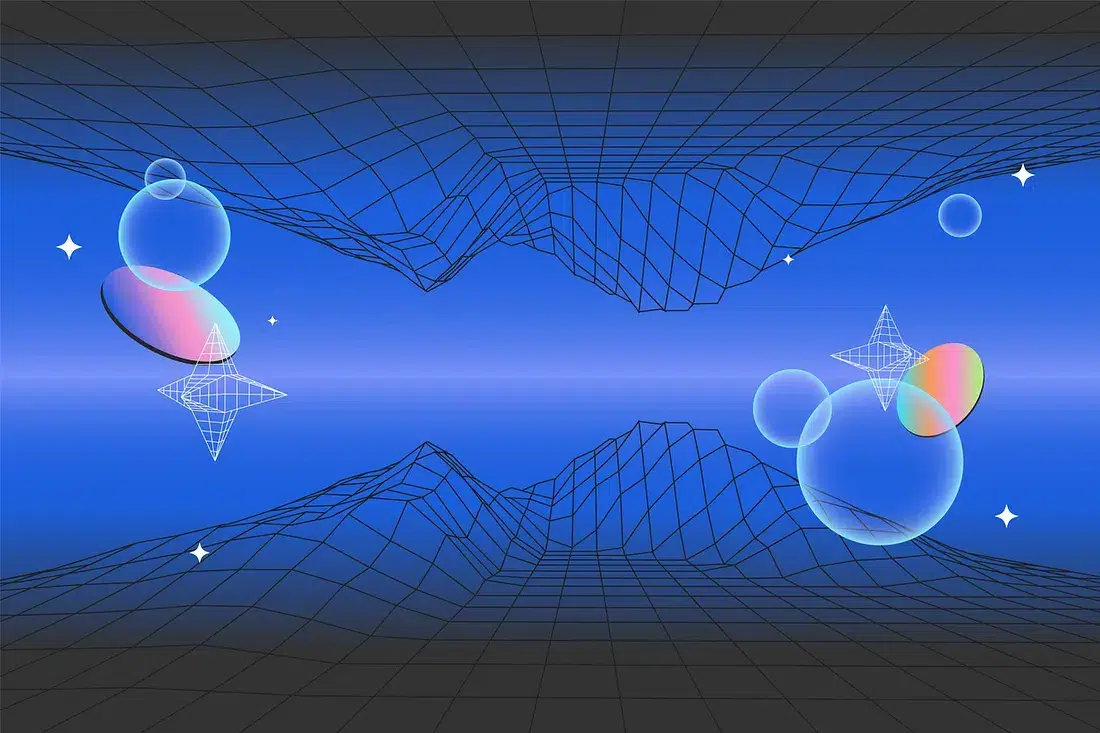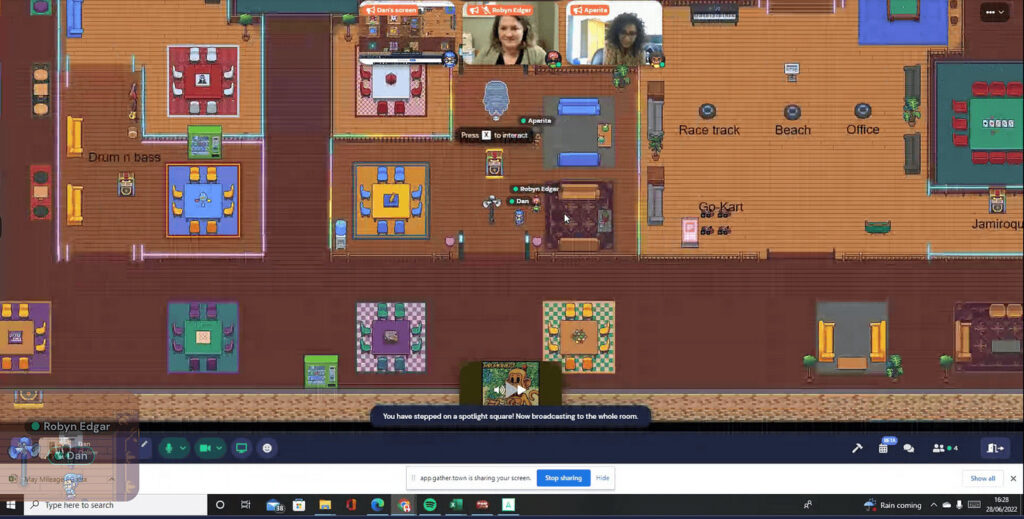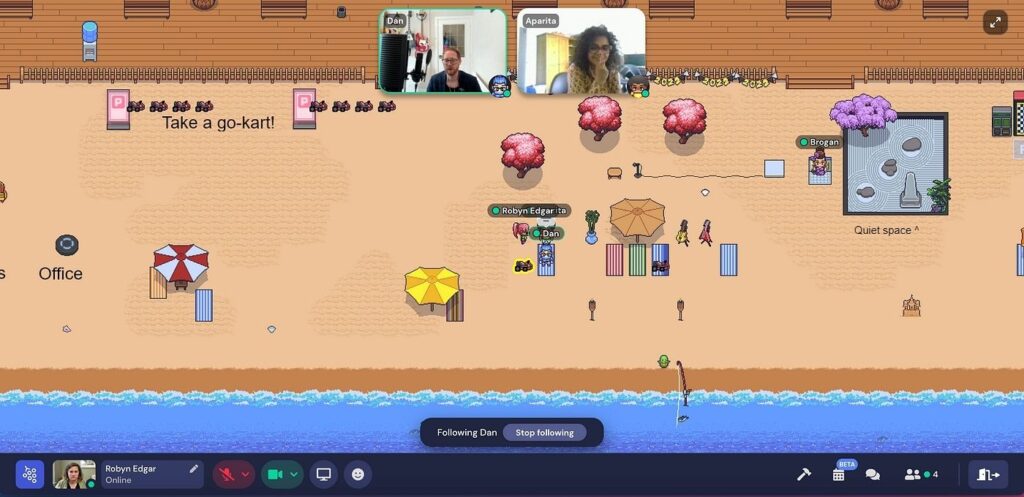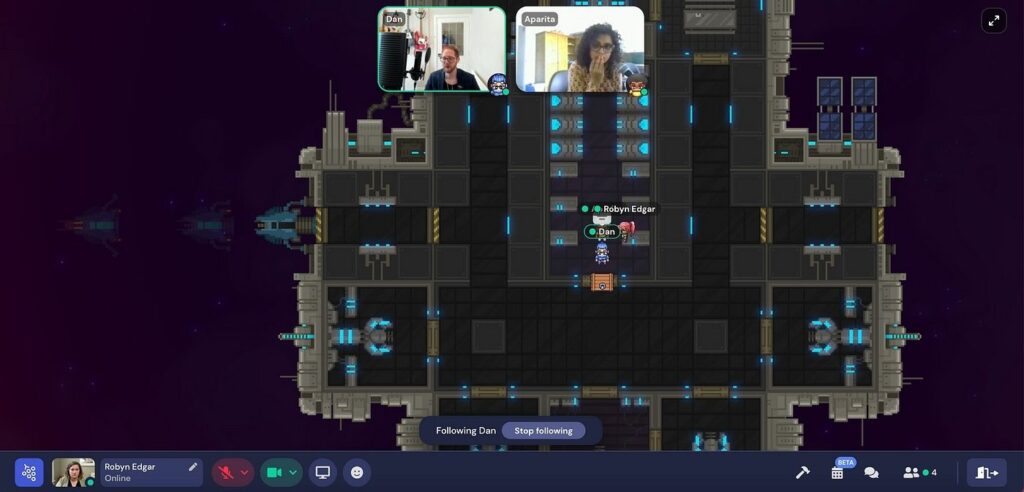Meet Me in the Metaverse

Co-written by producer Aparita Bhandari and sound designer Robyn Edgar
“Wouldn’t it be fun if we could record meeting this guest in the metaverse,” I found myself saying to my colleagues, as we were discussing putting together an episode for season five of Remote Works, a podcast by Citrix, a digital workspace platform that empowers organizations to carry out secure hybrid work.
In the previous four seasons, the podcast looked at work culture at the time of the pandemic, from in-person to remote, and the changes that came therein. Season five takes a look at how hybrid work is here to stay, according to the Work rebalanced report by Citrix, and how industry leaders and experts are thinking through four pillars — collaboration, flexibility, trust, and technology — to understand the forces challenging and reshaping business organizations.
The Background
The episode we were discussing focused on collaboration. Citrix was particularly keen on looking at how the metaverse is being used by companies for employees to come together — from company-wide off-sites to one-on-one meetings. As part of my research, I came across a few stories of people donning VR headsets to meet in the virtual world when in-person meetings were not possible.
I was intrigued by the descriptions of these meetings. People wrote about feeling dizzy and disoriented when first trying on the VR headsets. There was a sense of amusement as they discovered different avatars to represent themselves or walked through online spaces that ranged from game rooms to virtual offices.
Would it be possible to somehow replicate the virtual reality experience in audio?
Eventually, we landed on a guest: Dan Corcoran, managing director of Reedmace Solutions, a talent acquisition company based in Bromsgrove, England. Dan has built a virtual office on Gather, a popular video chat platform “designed to make virtual interactions more human.” To understand the space, I set up an initial meeting with him — a version of the pre-interview.
The Preparation
Dan’s virtual office didn’t require me to wear a VR headset. I simply had to log in using a link to meet him in the lobby of his office. With the right-click of a button, I was able to follow Dan around as he took me through some of the spaces — including a spaceship and a beach!
Then I organized a call with two sound designers on the Pacific Content team: Mark Angly and Robyn Edgar. As I explained the space to Mark and Robyn, they offered sound possibilities. I love these conversations; it’s one of the most exhilarating parts of the process — when you have blue-sky ideas.
We discussed incorporating binaural audio (an ongoing conversation among Pacific Content sound designers). Could this be an opportunity to use that technique of creating a truly immersive audio experience? What were the different spaces I would visit? Would it make sense to animate the beach, for example, with actual beach sounds? A couple of takeaways emerged from this conversation with Mark and Robyn: I would need Dan to be as descriptive as possible, and we needed sound references from the tour to guide our soundscape.
Now, I will hand it over to Robyn Edgar, who will tell you how we recorded the interview.
The Actual Interview
During the initial planning of how to tell Dan’s story, Mark, Aparita, and I discussed how to best sonically illustrate the virtual office space that Dan created. And to be able to conceptualize the sound, we first needed to work out how to record the interview.


For interviews, we usually use Riverside.fm to record our producers and guests, but in this case, we needed to be in Reedmace Solutions’ virtual office. So, we relied on Dan and Aparita recording themselves locally with their microphones — a technique known as a double-ender interview. In addition, I recorded the entire tour using Rogue Amoeba’s Audio Hijack tool as a backup. The Audio Hijack recording also allowed me to capture any sounds that were played on the tour so I would have a point of reference for sound design. In addition to recording sound, I took screenshots as we walked around the space so I would have a visual reference to rely on too. As Dan guided us through the space, I was able to gain a better understanding of the virtual world he created, which helped me brainstorm the kind of music and sound effects I would need to use to evoke an accurate mental image for listeners.

Translating the experience into audio
Before the recording, Mark, Aparita, and I had discussed big ideas based on our concepts of what a “metaverse” is. It’s easy to imagine a Ready Player One-style immersive world, but the reality is that metaverse spaces are all very different. Dan’s metaverse office has an arcade, video game, or Nintendo 64 kind of aesthetic to it.
Once I understood more about his team’s space, I decided to dial back the immersive approach. Joining Dan’s metaverse felt less like being completely in a virtual world, and more like layering a virtual space on top of a remote work setting. And so I wanted to make the audio for the story emulate that as much as possible with my dialogue cleanup, my sound effect selection, and my music selection.
Since the space in the metaverse was made up of physical environments like an office, a cafeteria, a spaceship, and a beach — I decided not to overly clean up the local recordings from Dan and Aparita. I intentionally left the room noise and reverb to make it clear that they were both in physical spaces; not in a studio talking about an abstract concept. This is similar to how I would approach a dialogue edit for a field recording. I also used their room tone to fill the silence and smooth any edits that were made in their conversation.
https://player.simplecast.com/346da028-fdb3-4ecb-b3eb-7ecbf56e754a?dark=false Example, Dan and Aparita speaking in an office in the metaverse
Next, I reviewed my raw recording of the tour and my screenshots to remind myself of the spaces that Dan had shown us. Dan had mentioned a caveat during our tour. He had actually turned off all of the automatic sounds in his metaverse office. Although there were built-in sounds for each of the spaces he created, he and his team found them to be a distraction while they were trying to work. Other than the occasional video or the cafeteria jukebox that a user can click and play, Dan’s metaverse office was silent.
I had a choice. Leave the interview as is — just dialogue — to be true to the recording. Or add sound effects to give listeners a space to visualize. Ultimately, I chose to add the sound effects. The only way to recreate Dan’s very visual virtual environment was to illustrate it sonically.
The sound of his virtual offices was similar to white noise — a lot of consistent background noise, looped. The sound wasn’t the focal point. It helped set the scene for the location. So I did the same thing when sound designing the interview for the podcast. I sourced library sounds of offices, cafeteria chatter, and beach waves that were recorded at a distance.
This made the sound effects feel like background scene-setting more than an immersive environment. I also chose to punctuate a few moments by adding additional close-mic’d sound effects, like the sound of water splashing as Aparita and Dan walked through the waves on the beach or the sound of race cars zooming past when we made our way to the race track.
My final sound design choice was to add music. Although there was no music playing in the actual metaverse space most of the time, I used it to help emphasize the visual aesthetic of Dan’s office. Since everything was pixelated and arcade-style, I chose to go with 8-bit video game music for the whole segment. I also used the music to indicate when we were hearing a clip from the metaverse tour versus when Aparita was talking to the host, Melanie Green, outside of the interview.
To accomplish this, I let the music play regularly during the host-producer conversation, and then as soon as we were in the metaverse tour segment, I added a room reverb to the music to make it feel more like music playing over speakers in an office space. It helped transport the listener from the bird’s-eye view with the host into the tour and back without having to do anything too distracting.
The Final Result
The metaverse section of this episode was very similar to how a traditional field-tape recorded interview might sound. It stayed true to the visual nature of Dan’s metaverse office and helped sonically illustrate what Aparita and I had experienced on the tour.
Season five of Remote Works premieres on September 14, 2023.
Sign up for the Pacific Content Newsletter: audio strategy, analysis, and insight in your inbox.
